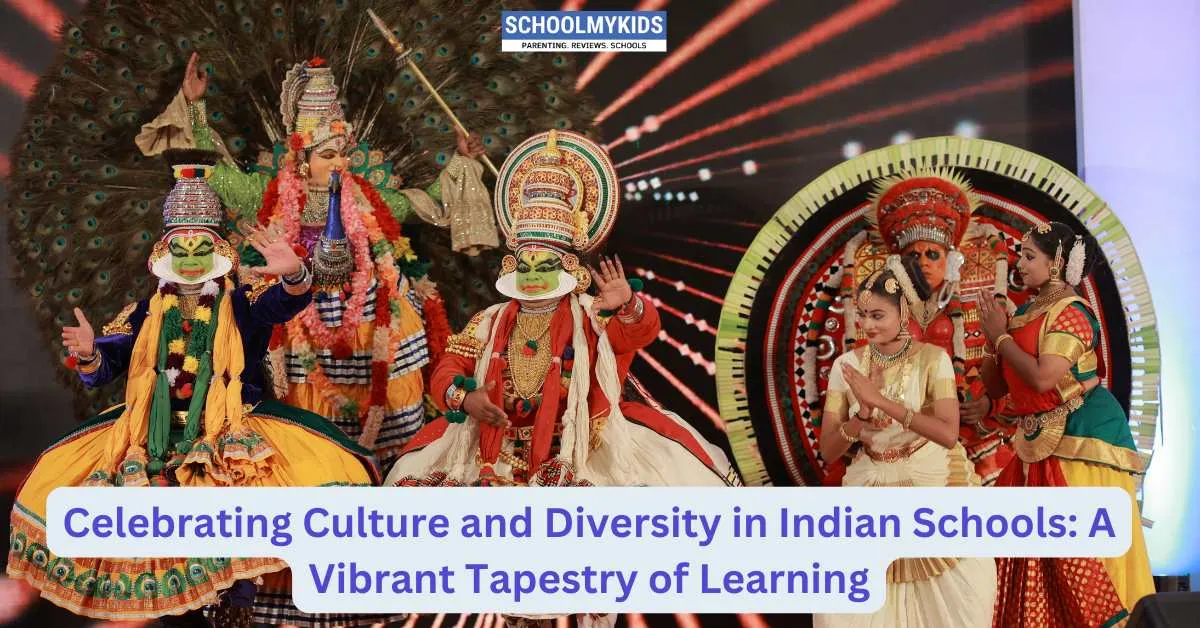India, a land renowned for its breathtaking diversity, presents a unique and enriching environment within its school walls. Celebrating this vibrant tapestry of cultures is not just a feel-good exercise; it's a fundamental aspect of holistic education that fosters inclusivity, understanding, and a deep appreciation for the nation's rich heritage. When Indian schools actively embrace and celebrate the diverse backgrounds of their students, they create a powerful learning environment that prepares young minds for a globalized and interconnected world.
Why Celebrate? The Profound Significance
Integrating the celebration of culture and diversity into the school ethos goes far beyond showcasing colorful costumes and dances. It lays the foundation for:
- Fostering Inclusivity and Belonging: When students see their own cultures and traditions recognized and valued, they feel a stronger sense of belonging and acceptance within the school community. This creates a safe and nurturing environment where every child feels seen and heard.
- Promoting Understanding and Respect: Exposure to different cultures breaks down stereotypes and prejudices. It allows students to learn about different customs, beliefs, and perspectives, fostering empathy and mutual respect.
- Combating Prejudice and Stereotypes: By actively celebrating diversity, schools can challenge preconceived notions and biases that students might have unknowingly absorbed. This helps in building a more tolerant and understanding society.
- Enriching the Learning Experience: Incorporating diverse cultural perspectives into the curriculum makes learning more engaging and relevant. It allows students to connect with different narratives and understand concepts from multiple viewpoints.
- Preparing Students for a Diverse World: In an increasingly interconnected world, the ability to interact and collaborate effectively with people from diverse backgrounds is crucial. Celebrating diversity in schools equips students with these essential skills.
- Strengthening National Unity: Recognizing and appreciating the diverse cultures within India strengthens the fabric of national unity. It fosters a sense of pride in the nation's rich and multifaceted heritage.
Painting the Canvas: Ways Indian Schools Celebrate
Indian schools are increasingly finding creative and meaningful ways to celebrate the cultural diversity within their communities. Some common and impactful initiatives include:
- Vibrant Cultural Festivals: Organizing events around national festivals like Diwali, Eid, Holi, Christmas, and regional festivals like Onam, Pongal, Baisakhi, and Durga Puja. These celebrations often involve traditional music, dance, food, and attire, allowing students to experience the richness of different cultures firsthand.
- Intercultural Exchange Programs: Facilitating interactions between students from different cultural backgrounds through pen-pal programs, joint projects, or even school exchange initiatives can broaden their horizons and foster deeper understanding.
- Curriculum Integration: Consciously incorporating diverse perspectives and content into subjects like history, literature, art, and music. This could involve studying the works of authors from different regions, learning about various art forms, or exploring historical events from multiple viewpoints.
- Language Diversity Initiatives: Recognizing and celebrating the multitude of languages spoken in India. This could involve language exchange programs, celebrating language day, or simply acknowledging and respecting students who speak different languages.
- Showcasing Talents through Art and Performance: Encouraging students to showcase their cultural talents through music, dance, drama, and visual arts. This provides a platform for students to express their cultural identities and share them with others.
- Delighting in Diverse Cuisines: Organizing food festivals where students and parents can share traditional dishes from their respective cultures. This offers a delicious and engaging way to learn about different culinary traditions.
- Inviting Voices from Different Backgrounds: Hosting guest speakers from various cultural, religious, and professional backgrounds to share their experiences and insights with students.
- Celebrating Heritage and Traditions: Organizing visits to local cultural sites, museums, and historical landmarks. Involving students in traditional crafts, storytelling sessions, and folk art workshops can connect them with their heritage.
- Creating Inclusive Classroom Practices: Ensuring that classroom discussions and activities are inclusive and respectful of all cultures. Teachers can be mindful of using examples and references that resonate with students from diverse backgrounds.
The Blooming Benefits: Outcomes of a Culturally Rich Environment
The positive impact of celebrating culture and diversity in schools is far-reaching:
- Enhanced Social Skills: Students learn to interact respectfully and effectively with individuals from different backgrounds, developing crucial social skills for navigating a diverse society.
- Increased Empathy and Understanding: Exposure to different cultural perspectives fosters empathy, allowing students to better understand and appreciate the experiences of others.
- Improved Academic Performance: A more inclusive and engaging learning environment can lead to increased student motivation and improved academic outcomes.
- Development of Global Citizenship: Students develop a broader worldview and a greater understanding of global issues, preparing them to be responsible and engaged global citizens.
- Stronger Sense of Identity: Students from minority cultures feel valued and affirmed in their identities, leading to increased self-esteem and confidence.
Navigating the Terrain: Addressing Potential Challenges:
While the benefits are undeniable, implementing effective cultural diversity initiatives can sometimes present challenges:
- Logistical Constraints: Organizing large-scale cultural events requires careful planning, resources, and coordination.
- Ensuring Authenticity and Avoiding Stereotypes: It's crucial to present cultures in a respectful and accurate manner, avoiding generalizations and stereotypes.
- Addressing Potential Sensitivities: Navigating cultural differences requires sensitivity and understanding to avoid unintentionally causing offense.
- Ensuring Participation of All Students: Creating inclusive activities that appeal to students from all backgrounds and encouraging their active participation is key.
- Teacher Training: Educators need to be equipped with the knowledge and skills to effectively facilitate discussions and activities related to cultural diversity.
Overcoming these challenges requires a collaborative effort from school administrators, teachers, students, and parents. Open communication, careful planning, and a genuine commitment to inclusivity are essential.
A Future Woven with Diversity
Celebrating culture and diversity in Indian schools is not just about acknowledging differences; it's about embracing them as strengths. It's about creating a learning environment where every student feels valued, respected, and empowered to contribute their unique perspectives. By nurturing an appreciation for the rich tapestry of Indian cultures, schools are not only shaping well-rounded individuals but also contributing to a more harmonious, inclusive, and progressive future for the nation. The vibrant hues of diversity, when celebrated within the school walls, paint a brighter and more promising future for India.








Be the first one to comment on this story.